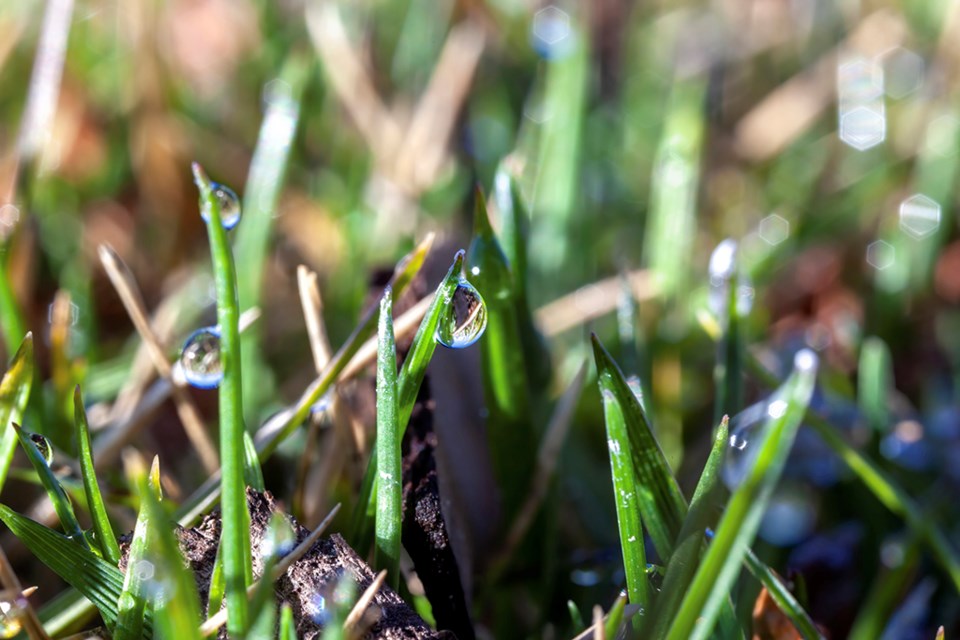SOUTHEASTERN SASKATCHEWAN CROP REGION — Spring seeding across the Southeastern Crop Region region is nearly complete, some producers may go back and seed some low spots if they are able to access them before the seeding window closes. Rains were welcome the past week and for most of the region the crops, hayland and pastures are in good condition.
Good, consistent rainfall over the past several weeks has allowed the region to see an improvement in on-farm water supplies when compared to last year at this time. The Bienfait and Moosomin areas received 41 mm, the Tantallon area 33 mm and the Marquis area 18 mm. In some areas, hail accompanied the rain. Tuxford, Marquis and Grand Coulee received enough pea sized hail to blanket the ground. No major flooding was reported and the water was reported to have absorbed into the soil nicely where rains were more general.
Cropland topsoil moisture is rated as eight per cent surplus, 85 per cent adequate, six per cent short and one per cent very short. Hay and pasture land topsoil moisture is rated as three per cent surplus, 88 per cent adequate, eight per cent short and one per cent very short.
In the southeast region, 55 per cent of the fall cereals, 38 per cent of the spring cereals, 35 per cent of the oilseed crops and 48 per cent of the pulse crops are at their normal stages of development for this time of year. Due to a very wet spring, crops have been slow to develop in the region, however, with warm weather in the forecast they will catch up quickly.
Crop conditions range from good to fair in the region, with 70 per cent of the spring wheat, 70 per of the canola and 74 per cent of the lentils being in good condition at this time. Crop germination has been poor in low areas and producers hope that seedlings will emerge soon.
The majority of crop damage this week was due to minor flooding, insect pests (flea beetle and grasshoppers), frost and hail. Producers are busy spraying when they can and beginning to clean and store their seeding equipment until next year.
Provincial Overview
Producers were able to wrap up most of the seeding operations in the province over the past week with 98 per cent of the crop now in the ground. There is still some seeding to be done in the east half of the province, where small portions of fields were too wet to seed. With recent rain in the region, these areas will likely go unseeded this season.
Multiple rain showers and thunderstorms hit the province over the past week. Several areas reported minor to severe flooding. While the rainfall caused damage in some areas, it was still very welcome to those who were desperately in need of moisture. In the west, the rain will hopefully allow crops to recover from the drought conditions, but due to the localized nature of the rainfall, much of the western regions will need more widespread rains soon to keep crops from failing. Some areas received hail over the past week, damage is currently unknown since many crops have not yet emerged, but enough hail was received in some areas to make it appear as if it had snowed.
The most rain was received north of Rosetown, in RM 317, where over 125 mm was recorded Monday night; the area experienced some flooding but most of the water was able to soak in. The Biggar area received 69 mm, the Dinsmore area 65 mm, the Bienfait and Rhein areas 41 mm, the Duck Lake area 34 mm and the Tyner and Bruno areas 25 mm. Many other areas received rain this past week.
With the rainstorms came the wind, which delayed many producers from being able to spray for weeds and insects such as flea beetles, cutworms and grasshoppers.
Provincially, topsoil moisture conditions have improved compared to the previous week. Cropland topsoil moisture is rated seven per cent surplus, 65 per cent adequate, 19 per cent short and nine per cent very short. Hay and pasture land is rated as six per cent surplus, 61 per cent adequate, 24 per cent short and nine per cent very short. For some hay fields in drier areas, the rain might have come too late and the hay crop may not be ready for first cut in a couple of weeks. In areas where moisture was abundant, the crops look very good.
Provincially, 69 per cent of fall cereals, 60 per cent of pulse crops, 50 per cent of spring cereals and 41 per cent of oilseed crops are at their normal stages of development for this time of year.
Crop conditions across the province mostly range from fair to good. With the recent rains, producers are hopeful that conditions will improve, especially in the west. Most damage this week was from drought, flooding, insects (flea beetles, grasshoppers and cutworms), gophers, hail and wind. Producers have wrapped up some of their reseeding operations and are now turning their focus back to spraying to keep pests under control.




